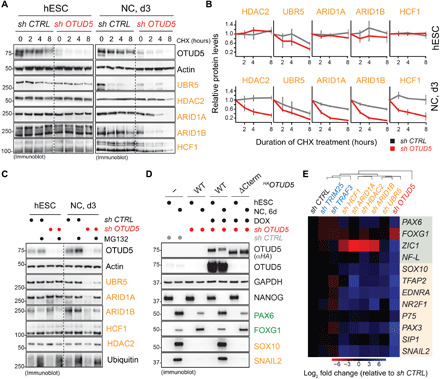Fig. 5. OTUD5 controls early embryonic differentiation through regulating the stability of chromatin remodelers.

(A) OTUD5 stabilizes chromatin regulators in differentiating hESCs. Control or OTUD5-depleted hESCs or hESC subjected to neural conversion for 3 days were treated with CHX for indicated time periods. Protein stability of chromatin regulators was determined by immunoblotting using indicated antibodies. (B) Quantification of three biological replicates of the experiment shown in (A) (error bars denote SD, normalized to actin, 0 hours = 1). (C) OTUD5 protects chromatin regulators from proteasomal degradation in differentiating hESCs. Control or OTUD5-depleted hESCs or hESC subjected to neural conversion for 3 days were treated with the proteasome inhibitor MG132 for 4 hours followed by immunoblotting with indicated antibodies. (D) Chromatin regulator binding-deficient OTUD5ΔCterm does not support neural conversion. hESC cells expressing shRNA-resistant and doxycycline-inducible WT or chromatin regulator binding-deficient (ΔCterm) FLAGHAOTUD5 were generated. Cells were depleted of endogenous OTUD5 using shRNA as indicated, treated with or without doxycycline (DOX), and subjected to neural conversion for 6 days. Differentiation was monitored by immunoblotting using the indicated antibodies against hESC, CNS precursor, and neural crest markers. Note that anti-OTUD5 antibodies were raised against the C terminus of OTUD5 and do not recognize OTUD5ΔCterm. (E) Individual depletion of chromatin regulators, but not previously described OTUD5 substrates TRIM25 and TRAF3, partially phenocopies the aberrant neural conversion program observed upon OTUD5 reduction. hESCs were depleted of endogenous OTUD5 or indicated proteins using shRNAs, subjected to neural conversion for 6 days, and analyzed by qRT-PCR for CNS precursor markers (green) or neural crest markers (orange). Marker expression was normalized to shcontrol followed by hierarchical clustering. RPL27, endogenous control.
